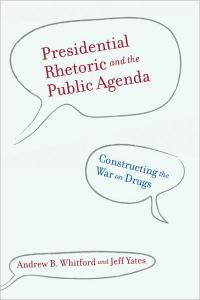The Supreme Court’s recent decision in Herring v. United States essentially brings to bear the axiom of Justice Benjamin Cardozo, stated so many years ago, that the criminal should not go free because he constable has blundered. Cardozo essentially saw a disconnect between the right and the remedy. However, rights without remedies are fairly useless and become platitudes to maintain confidence in governments that possibly do not deserve confidence or trust – at least in specific instances. On Scotus Blog, Tom Goldstein (one of the defendant attorneys in the case) sees Herring as a far reaching case with large implications for criminal procedure. He summarizes the case and comments as follows:
On its facts, the case is about the application of the exclusionary rule to errors in police recordkeeping. Narrowly framed, the question was whether the Court’s prior ruling that errors by judicial clerks do not trigger the exclusionary rule should be applied to police clerks. The Court holds that a negligent error by the police clerk does not give rise to exclusion. The dissents dispute the majority’s reasoning within that frame of reference – i.e., they treat the case as if it were only about police clerks and police recordkeeping.
But in fact the majority’s reasoning is broader – much, much broader. Today, the Supreme Court holds that negligent errors by the police generally do not trigger the exclusionary rule. “As laid out in our cases, the exclusionary rule serves to deter deliberate, reckless, or grossly negligent conduct, or in some circumstances recurring or systemic negligence.” Slip Op. at 9. “[W]e conclude that when police mistakes are the result of negligence such as that described here, rather than systemic error or reckless disregard of constitutional requirements,” the exclusionary rule does not apply. Id. at 12.
The opinion has nothing to do with the fact that the error here is one of recordkeeping. It applies fully to negligence by police officers in their day-to-day determination whether there is probable cause to conduct a search. If the officer makes an objectively reasonable mistake – i.e., he is merely negligent – the exclusionary rule does not apply to whatever evidence he finds. Put another way, the Supreme Court today extended the good faith exception to ordinary police conduct.
Goldstein may be correct as to the cases implications, but I think most saw his case coming. As he notes, the Court’s recent decision in Hudson, which greatly narrowed the application of exclusionary rule, sent a strong signal as to the Roberts Court’s intentions in this area of law.
While the Court and legal scholars have posited a number of good rationales for the exclusionary rule, the premise that it is designed to prevent police misconduct has clearly gained the most traction in recent decades – for whatever reason. This case simply extends a line of cases in which others had bungled and the police benefited. But perhaps there is something special to the case in that it sets up a dangerous set of incentives for enforcement agents – be incompetent and the evidence gets admitted. We could imagine this case leading to a lot of deliberate incompetence – how would you prove that anyway? I imagine that civil rights actions might still be viable in the face of such bungling, but after some of the Court’s rulings (e.g. Lago Vista) such actions seem to be a rather sad disincentive.
Dirty Harry would be pleased. 🙂


I’m not sure that I understand these cases, and I’m not a lawyer, but I am a scientist, and I wonder:
What happens to the cases where forensic evidence is wrong, but not as part of proven, systemic mismanagement and because of simple human error (which may or may not be shown later to be the result of systematic mismanagement)?
Some errors may come from negligence, but there are other ways for them to creep in. It is sometimes, in some contexts, referred to as “being human” to err.
Take for example, the use of DNA data to tell a jury that an individual has been uniquely identified when, in fact, the neighborhood and lack of family structure in some areas and demographic groups may result in quite a few people who are indistinguishable by many DNA tests. I’m under the impression that this is not, in fact, an uncommon situation for Inner City cases, and maybe in some, shall we say, more insular mountain or rural communities.
Are these issues at all related to the cases and errors you discuss above? Thanks!